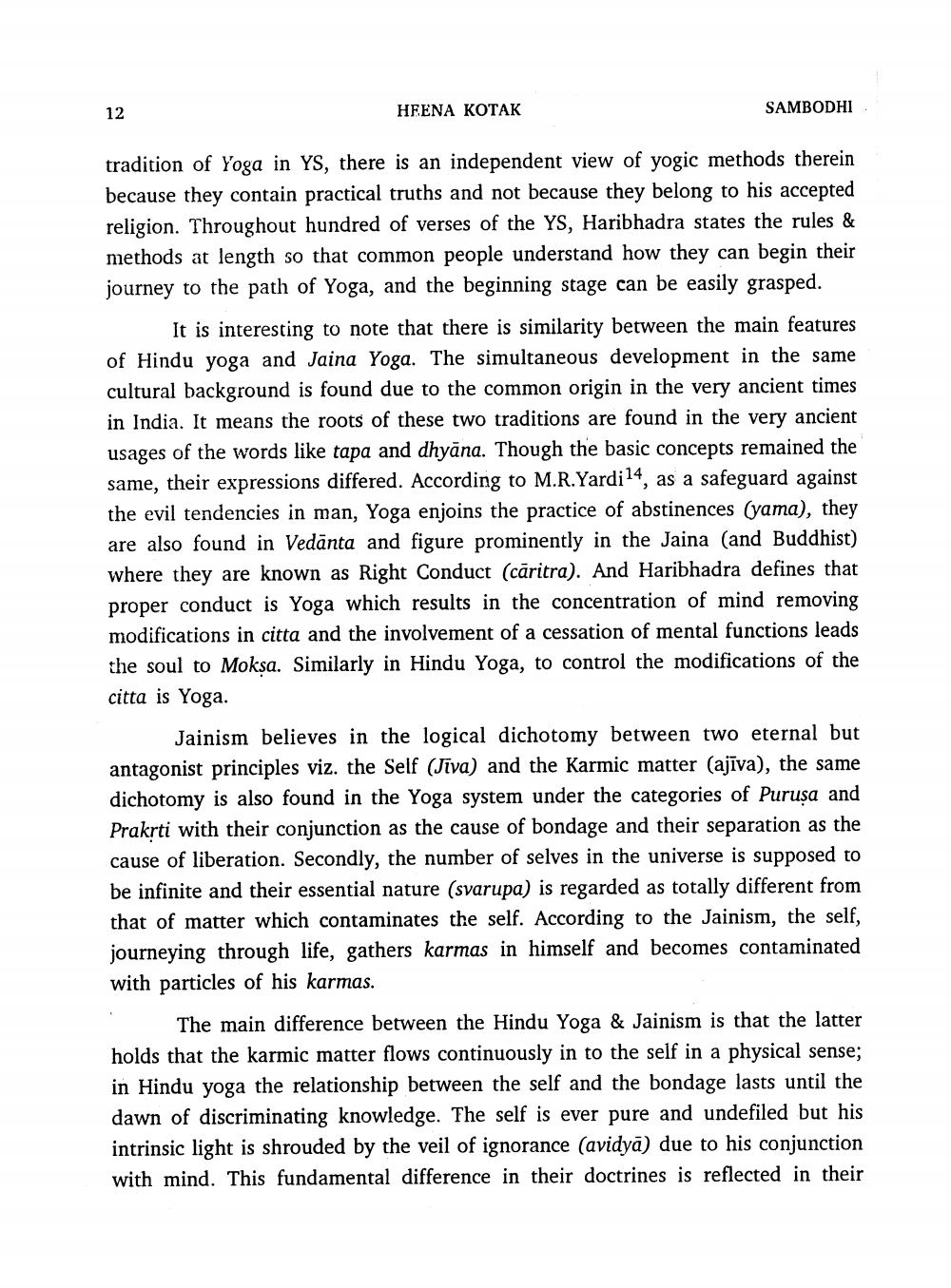________________
HEENA KOTAK
SAMBODHI
tradition of Yoga in YS, there is an independent view of yogic methods therein because they contain practical truths and not because they belong to his accepted religion. Throughout hundred of verses of the YS, Haribhadra states the rules & methods at length so that common people understand how they can begin their journey to the path of Yoga, and the beginning stage can be easily grasped.
It is interesting to note that there is similarity between the main features of Hindu yoga and Jaina Yoga. The simultaneous development in the same cultural background is found due to the common origin in the very ancient times in India. It means the roots of these two traditions are found in the very ancient usages of the words like tapa and dhyāna. Though the basic concepts remained the same, their expressions differed. According to M.R.Yardi14, as a safeguard against the evil tendencies in man, Yoga enjoins the practice of abstinences (yama), they are also found in Vedānta and figure prominently in the Jaina (and Buddhist) where they are known as Right Conduct (căritra). And Haribhadra defines that proper conduct is Yoga which results in the concentration of mind removing modifications in citta and the involvement of a cessation of mental functions leads the soul to Moksa. Similarly in Hindu Yoga, to control the modifications of the citta is Yoga.
Jainism believes in the logical dichotomy between two eternal but antagonist principles viz. the Self (Jiva) and the Karmic matter (ajīva), the same dichotomy is also found in the Yoga system under the categories of Purusa and Prakrti with their conjunction as the cause of bondage and their separation as the cause of liberation. Secondly, the number of selves in the universe is supposed to be infinite and their essential nature (svarupa) is regarded as totally different from that of matter which contaminates the self. According to the Jainism, the self, journeying through life, gathers karmas in himself and becomes contaminated with particles of his karmas.
The main difference between the Hindu Yoga & Jainism is that the latter holds that the karmic matter flows continuously in to the self in a physical sense; in Hindu yoga the relationship between the self and the bondage lasts until the dawn of discriminating knowledge. The self is ever pure and undefiled but his intrinsic light is shrouded by the veil of ignorance (avidyā) due to his conjunction with mind. This fundamental difference in their doctrines is reflected in their




